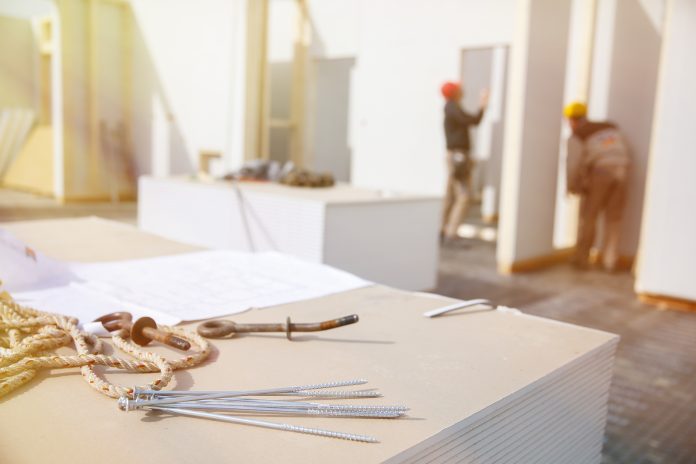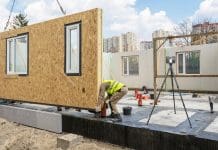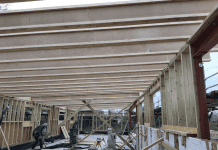During the peak of the pandemic, more than 3.9 billion people were told to stay at home by their governments, according to research by the UN’s Human Rights Office of the High Commissioner. But, what if you don’t have a home to stay in? Modular construction could be the answer, explains Birgit Linnamae, CEO of Kodasema
What if the home you had is suddenly taken away from you because you can’t afford the rent or mortgage, or the landlord wants to sell the house or apartment? One solution that should be considered is large-scale production and deployment of modular homes.
The scale of the problem
According to the UN statistics, 1.8 billion people do not have a decent home to live in. Many millions, especially renters and small landlords, were and are at risk of losing their homes due to the economic impact of the pandemic.
The global scale and complex challenges of the housing crisis are many, with limited progress made, says a recent report by the UN’s Human Rights Council, to mark 20 years of the special rapporteur on the right to adequate housing.
The UN report said: “During recent decades, the percentage of the urban population living in informal settlements with insufficient security or tenure has grown. Homelessness has been on the increase and the Covid-19 pandemic has resulted in increasing housing insecurity for many.
“Large-scale development projects, expansion of agribusiness, logging, natural conservation initiatives and climate change mitigation measures are increasingly resulting in forced evictions and displacements.”
Taking a step back, a lack of adequate housing can also indicate other problems, such as a lack of access to roads, water, gas, and electricity supplies. After all, homes need these utilities for daily living. It means these other important factors also need innovative solutions – housebuilding alone isn’t the answer.
A useful solution to consider
With such large-scale, complex problems, a one-size-fits-all approach simply won’t work. But, looking back over the solutions that have worked, and those that haven’t, can surely think harder and consider alternative ways to give more people a stable, decent home to live in?
One solution that should be considered is the production of modular homes. That won’t solve every housing crisis or large-scale humanitarian displacement in every part of the world. But, it could solve some of the problems, potentially for lots of people.
Firstly, there’s the question of human dignity. Being forced to live in a tent or on the streets, or crammed into a tiny, unsafe space is not acceptable, but it’s the reality for many. Modular homes can be built to a range of affordable specifications, with things like a living area, bedroom, kitchenette, bathroom, heating and cooling as options. It makes a house into a home fit for people to live in.
Flexibility is also key. Since modular homes are a freestanding structure with independent entrances, they can be built in a cluster or a stack formation if needed, supporting efforts to maintain and build community and maximize space available.
Modular buildings can also support communities with the creation of arts, cultural, educational, and sporting spaces, shops, and cafes. Modular construction is very adaptable, allowing for the creation of houses that become homes that become villages fit for people to live in.
A building that can be uninstalled, moved, and re-installed can provide governments, housing organisations, and communities with more flexibility to relocate as needed when faced with conflict or natural disaster, or when a sudden demand for housing arises due to a natural disaster or conflict that has resulted in displacement or the destruction of homes. They’re also quicker to build, and can be stored as and when they are needed.
A sustainable solution
When it comes to sustainability, offsite, factory constructed houses leave a smaller footprint in terms of transport pollution, worker safety, reduced construction waste and urban noise.
This is an important factor to take into account. A UN Environment Programme report that says the building and construction sector is responsible for 38% of global energy-related CO2 emissions.
And, according to McKinsey & Company, the innovation in construction has only increased efficiency by 6% versus in agriculture where innovation has led to growth of 200% between 1947 and 2016. So, not only are more houses built, it needs to be done in a way that supports sustainability.
Best done in collaboration
Openness to innovation and collaboration is essential. Here, I’m thinking about how modular homes could be transported to hard to reach and underused spaces, without the need for traffic pollution and the creation of roads that could result in the destruction of natural habitats. Perhaps a new breed of airships offer an innovative, and sustainable solution to transport modular homes from factory to site?
And when it comes to accessing utilities, also mentioned above, there are signs of hope with start-ups like Spacedrip, who could provide clean water to modular homes without the time and cost of creating utility supply infrastructure.
Modular homes can provide a solution to some of the problems around the global housing crisis, for some of the people in need. They won’t solve them all. And, they won’t be a solution in isolation, but only with the collaboration of public and private sector partners and innovators together.
Birgit Linnamae
CEO

















